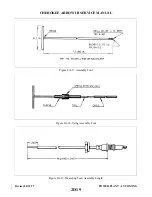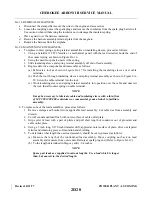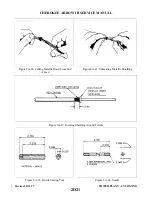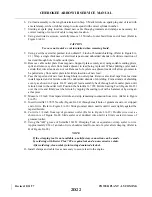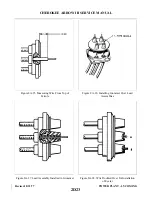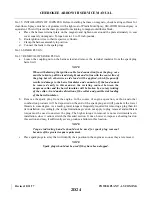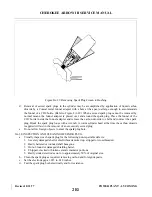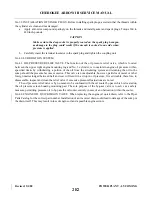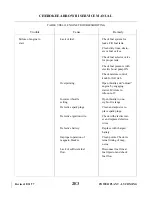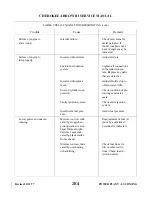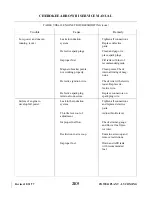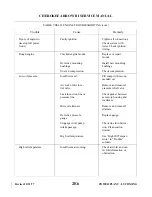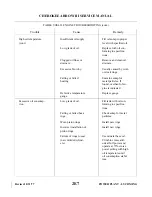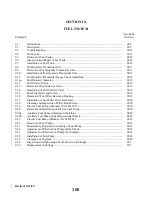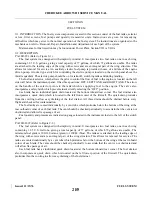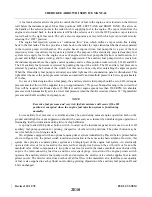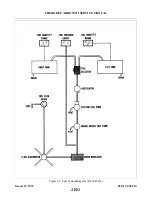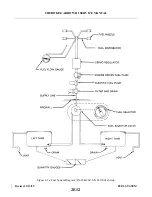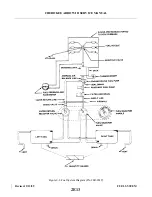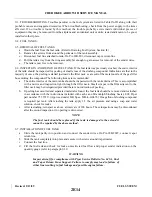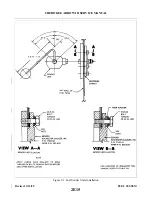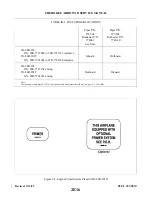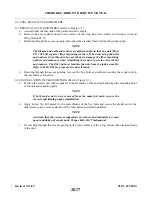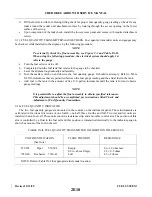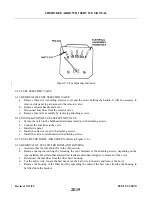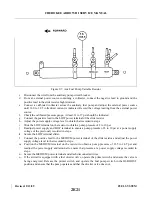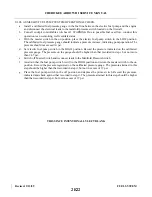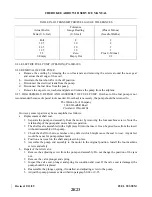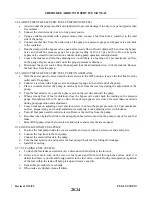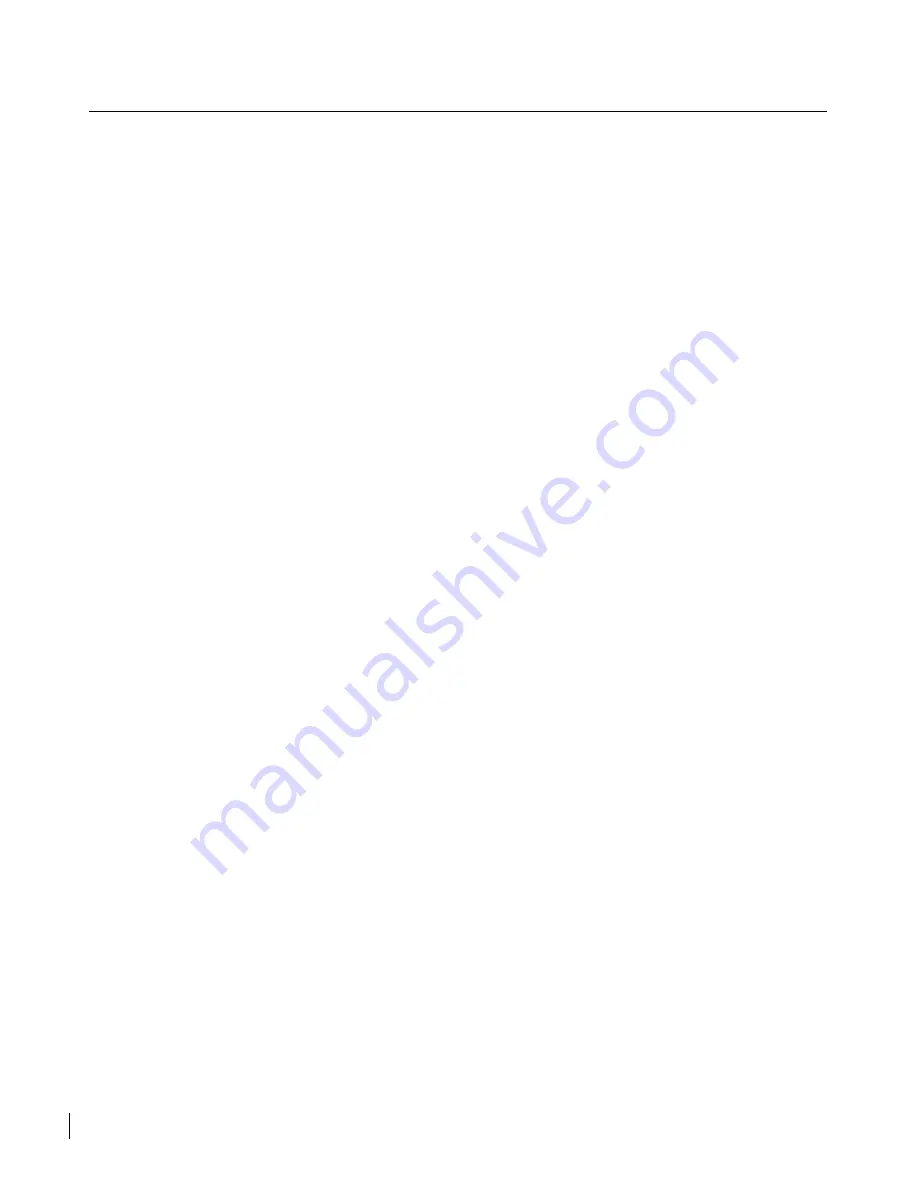
SECTION IX
FUEL SYSTEM
9-1. INTRODUCTION. The fuel system components covered in this section consist of the fuel tanks, selector
valves, filter screens, fuel pumps and quantity transmitter units. Instructions are given for remedying
difficulties which may arise in the normal operation of the fuel system. The instructions are organized so the
mechanic can refer to: Removal, Repair, Installation and Adjustment of each part of the system.
Maintenance for fuel injection may be found under Power Plant, Section VIII or VIIIA.
9-2. DESCRIPTION.
PA-28R-201 (Refer to Figure 9-1.)
The fuel system was designed with simplicity in mind. It incorporates two fuel tanks, one in each wing
containing 38.5 U.S. gallons, giving a total capacity of 77 gallons, of which 72 gallons are usable. The tanks
are attached to the leading edge of the wing with screws and are an integral part of the wing structure. This
allows for removal for service. An auxiliary electric fuel pump is provided in case of a failure of the engine
driven pump. A rocker type switch for controlling the electric pump is located on the switch panel above the
throttle quadrant. The electric pump should be on for take-off, switching tanks and during landing.
The fuel tank selector, which allows the pilot to control the flow of fuel to the engine, is located on the left
side wall below the instrument panel. It has three positions: OFF, LEFT TANK and RIGHT TANK. The arrow
on the handle of the selector points to the tank which is supplying fuel to the engine. The valve also
incorporates a safety latch which prevents inadvertently selecting the “OFF” position.
Each tank has an individual quick drain located at the bottom inboard rear corner. The fuel strainer also
incorporates a quick drain which is located in the left front comer of the firewall. The quick drain protrudes
from the cowling to allow easy draining of the fuel strainer. All three drains should be drained before every
flight and checked for contamination.
The fuel tanks are vented individually by a vent tube which protrudes below the bottom of the wing at the
rear outboard corner of each fuel tank. The vent should be checked periodically to ascertain that the vent is not
obstructed and allows free passage of air.
Fuel quantity and pressure are indicated on gauges located in the instrument cluster to the left of the switch
panel.
PA-28R-201T (Refer to Figure 9-2.)
The fuel system was designed with simplicity in mind. It incorporates two fuel tanks, one in each wing
containing 38.5 U.S. Gallons, giving a total capacity of 77 gallons, of which 72 gallons are usable. The
minimum fuel grade is 100/130 octane (green) or 100LL (blue). The tanks are attached to the leading edge of
the wing with screws and are an integral part of the wing structure. This allows for removal for service. The
tanks are vented individually by a vent tube which protrudes below the bottom of the wing at the rear inboard
corner of each tank. The vents should be checked periodically to ascertain that the vent is not obstructed and
will allow free passage of air.
Each fuel tank has as individual quick drain located at the bottom inboard rear corner. The fuel strainer
also incorporates a quick drain, which is located on the left lower portion of the firewall. The quick drain
protrudes thru the cowling to allow easy draining of the fuel strainer.
Issued: 12/15/76
2E9
CHEROKEE ARROW III SERVICE MANUAL
FUEL SYSTEM
Summary of Contents for ARROW III
Page 4: ...THIS PAGE INTENTIONALLY LEFT BLANK 1A4...
Page 12: ...THIS PAGE INTENTIONALLY LEFT BLANK 1A12...
Page 94: ...Figure 4 2 Wing Installation Revised 2 13 89 1D22 CHEROKEE ARROW III SERVICE MANUAL STRUCTURES...
Page 171: ...lH3 INTENTIONALLY LEFT BLANK...
Page 172: ...lH4 INTENTIONALLY LEFT BLANK...
Page 286: ...THIS PAGE INTENTIONALLY LEFT BLANK Revised 2 13 89 2A8...
Page 528: ...INTENTIONALLY LEFT BLANK 2K10 THRU 2L24 2K10...

